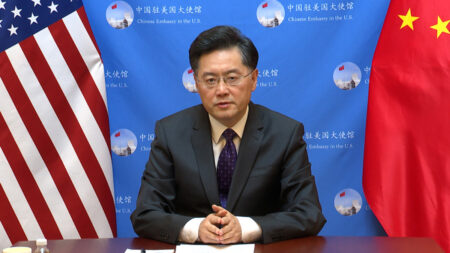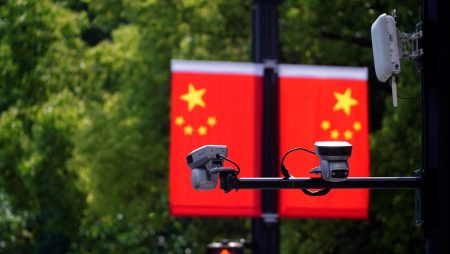Shanghai – In a move that reflects growing concerns over China’s economic momentum, the yuan experienced a significant decline against the dollar, reaching its lowest level in six months. The People’s Bank of China, the country’s central bank, took action by cutting a key policy rate, signaling a potential shift towards further easing measures to stimulate economic growth.

Image Source : Getty Images
The central bank’s decision to lower the borrowing cost of its medium-term policy loans, the first rate cut in 10 months, was in line with market expectations. This development coincided with the release of recent data, which revealed underwhelming performance in industrial output and retail sales growth, fueling worries about the state of the post-COVID economic recovery.
At the start of the trading day, the People’s Bank of China set the midpoint rate at 7.1489 per U.S. dollar, marginally stronger than the previous fix of 7.1566. However, the spot yuan opened at 7.1754 per dollar, showing a continuous weakening trend throughout the morning. By midday, it remained unchanged at 7.1754, indicating a decline of 123 pips from the previous late session close.
Currency analysts have drawn attention to the yuan’s nominal rate against the China Foreign Exchange Trade System currency basket, which has now reached its lowest level in 2022. When considering the real effective exchange rate against another currency basket managed by the Bank for International Settlements, the yuan is currently at its lowest point since 2014. This observation has led experts to suggest that the yuan is undervalued in terms of its overall valuation.
Despite the yuan’s depreciation, there is anticipation that the Chinese government’s economic stimulus measures could potentially bolster the currency. The unexpected rate cut announced earlier in the week by the central bank was interpreted as an early sign of forthcoming measures to support the economy. Interestingly, even in the face of indications from the U.S. Federal Reserve about potential rate hikes, the yuan managed to strengthen by 0.3% against the dollar, reaching a rate of 7.147 the previous day.
Market observers, like Trang Thuy Le, a foreign exchange strategist at Macquarie Group, believe that the key factors shaping the future trajectory of the yuan will be China’s stimulus efforts and the perceived value in the currency. Currently, the yuan’s trading range is limited to 2% around a daily midpoint set by the People’s Bank of China. Notably, Le has observed that the central bank appears to be more accepting of yuan depreciation rather than actively intervening to appreciate the currency through its daily rate fixes. This approach might be influenced by relatively stable currency markets and the gradual downward trend of the yuan.
The recent rate cut is seen as an indication that the central bank could potentially implement further easing measures in the coming weeks, aiming to address weakening demand and investor sentiment. Analysts from UBS note that the offshore yuan spot rate had already shown an upward trend prior to the rate cut announcement, suggesting that the market had already priced in this expectation. Furthermore, they predict that due to ongoing economic weaknesses and the potential for additional easing measures, the yuan is likely to face further losses against the dollar.
As of midday, the global dollar index strengthened to 103.271 from the previous close of 102.948. The offshore yuan traded at a rate 86 pips weaker than the onshore spot, at 7.184 per dollar. Looking ahead, the one-year forward value for the offshore yuan was estimated at 6.9713 per dollar, implying a potential appreciation of approximately 3.05% within the next 12 months.
In light of persistent concerns about the economic slowdown and the possibility of additional stimulus measures, market participants will closely monitor China’s monetary policies and their impact on the yuan’s exchange rate against the dollar. The future direction of the yuan will be influenced by these factors, as well as broader global economic conditions.













